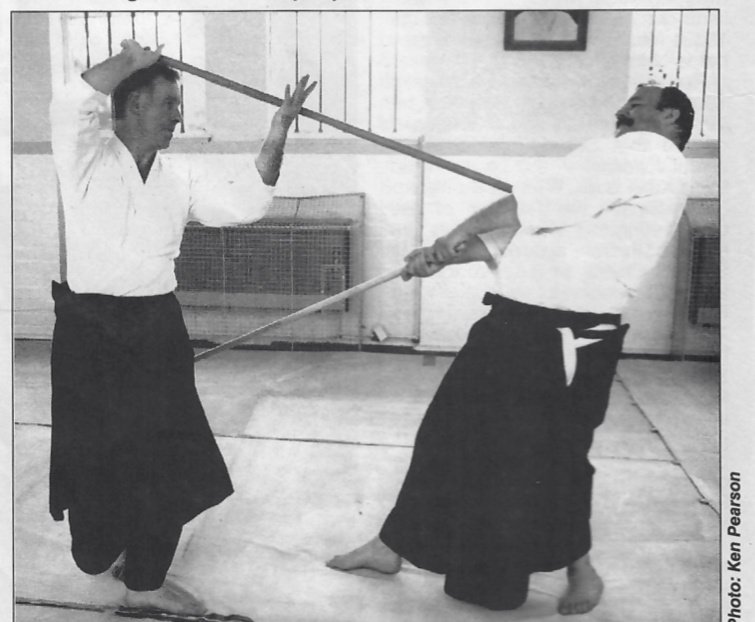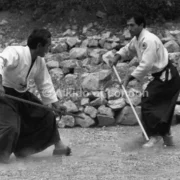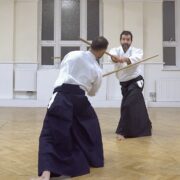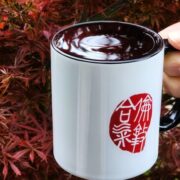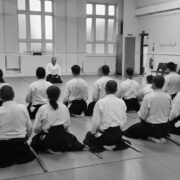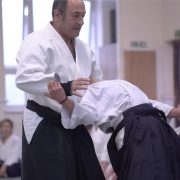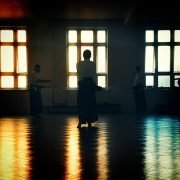AIKIDO SENSEI AND SEMPAI…
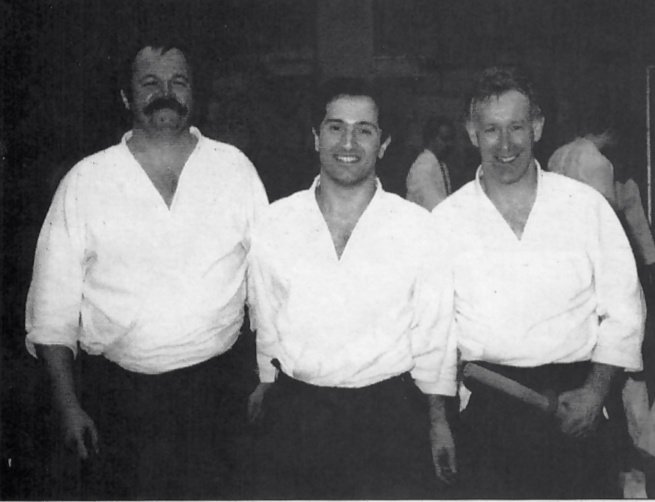
Mr. Smith, the founder of the United Kingdom Aikikai, holds the rank of 5th Dan, awarded by Chiba Sensei in 1988, a grade recognised and authenticated by the Aikido Foundation, Tokyo. Bill started his Aikido training in 1961 – after having trained in Judo, Karate and Boxing – under Mr. Ralph Reynolds of the Birmingham Aikido Institute. Training under the auspices of Mr. Reynolds has been a precursor to many fine Aikido careers – Tony Cassells, Peter Brady, Chris Mooney, Donovan Waite to name but a few.

When, in the 1960s, Mr. Reynolds and Chiba Sensei went their separate ways, Bill followed the path of Chiba’s Aikido and founded his own dojo in Cradley in the Black Country in 1968. He has since helped many now well-known figures to develop their potential through Aikido. Prior to the formation of the U.K.A., Mr. Smith was the Head of National Coaches for the British Aikido Federation under Kanetsuka Sensei, and served for many years as the British representative on the Superior Council of the International Aikido Federation. Indeed, Bill was the longest-serving of the non-Japanese Superior Councillors. Needless to say, his administrative antecedents are only one part of his Aikido life.
So, how best to describe this man’s Aikido? Well, the phrase ‘bloody powerful’ comes quickly to mind! The focus of Bill’s technique, particularly his striking methods, is really quite formidable. Fortunately, he is the most considerate of men, and exercises a high degree of control quite a lot of the time! For me, personally, the high point of his Aikido is the clarity of technique and the strength and form of his kamae at the conclusion of a particular throw or lock. His classes always begin with a solid foundation of basic exercises for Aikido, e.g. striking, ukemi (rolling break-falls), tai sabaki (body movements/evasions), and then progresses to the practice of fundamental techniques. Even when practicing advanced technique, the strength of his basic Aikido shines through. His extensive and most effective use of the hand blade provides a strong link with the sword basis of the art, and with the basie form of suwari waza kokyo ho , or sitting breath power exercise.

Although very much a ‘Chiba man’, Bill has a very eclectic style of Aikido, which has developed through his interaction with a great many Shihan over the years. When projecting an uke over the tatami (mat), Bill’s kamae shows the obvious influence of O’Sensei – through the study of video and film of the Founder, of course, as neither of us were privileged to see him. This is expressed by an almost flamboyant (I never thought I would use that word to describe any action of Bill’s) use of his hands in extending his kokyu or breath power. When he does this, his kime or martial focus is easily seen and felt! Bill’s smaller ‘circle’ techniques (if l may use that phrase) are practical in the extreme, and are quite akin to the throwing and locking forms of Goju-Ryu Karate – in my opinion, that is.
Mr. Smith’s most senior student is one Gordon Jones. Gordon, like Bill, holds the grade of 5th Dan, is a Shidoin of the U.K.A. and a teacher at Cradley Dojo. He is also a very powerful Aikido practitioner. Although similar to Mr. Smith in some ways, Gordon has developed a quite distinctive style of his own. With Mr. Smith one has really to be on the receiving end of his Aikido to appreciate fully the power behind it. But just watching Gordon demonstrate is more than enough to convince even the most ardent sceptics of his effectiveness.
Although his Aikido is, of course, changing and developing with time and progress, it still, in my opinion, retains many of the qualities of Chiba Sensei’s early style. This is expressed in the large movements he employs in dealing with a partner’s attack, and in the long, almost Shotokan Karate zenkutsudachi (front stance) he usually finishes in. His Aikido seems to me to be quite linear in its execution, or perhaps his spherical movements are just more subtly defined. Whichever, his sharpness and power are something quite unique. From an instructional point of view, l have always found his analytical approach to fundamental Aikido both useful and interesting. Although always careful in how he teaches, he has never, in my experience, been afraid to put his Aikido on the line by demonstrating some of the art’s more rigorous and difficult techniques.
